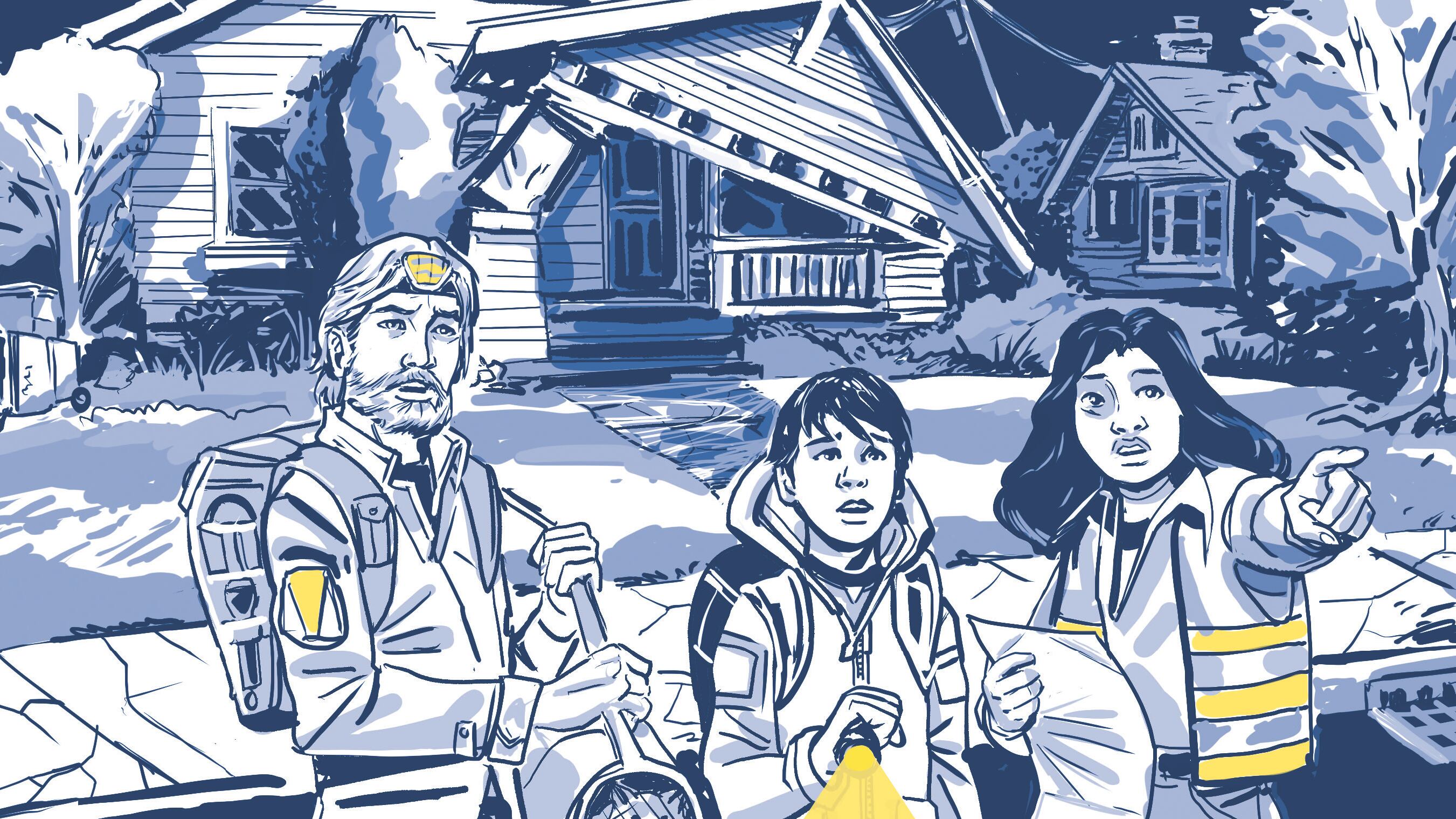For all its wonder and beauty, the Pacific Northwest is not without its environmental challenges. Just take a look at recent years: the 2020 wildfires, the historic heat wave in 2021 that shattered PNW temperature records and, as recently as December, a magnitude 7.0 earthquake in Northern California that brought tsunami warnings along the West Coast up to Douglas, Ore. Oh, and then there’s “The Big One,” the anticipated earthquake along the Cascadia subduction zone expected to be so large it could become the worst natural disaster in the history of North America and kill thousands of people. Apologies for the reminder.
“It’s an evergreen story, unfortunately,” says Henry Latourette Miller, a Tigard city planner and author. His new book, The Pacific Northwest Disaster Guide (Ooligan Press, 118 pages, $16.95), is an illustrated how-to that seeks to increase disaster preparedness in the region. Published in November, the guide at its most modest serves as a fun exercise in disaster preparedness, teaching kids and parents how to pack go bags and plan household emergency evacuation plans. But at best, “this book could save your life,” Latourette Miller boldly writes in the guide’s introduction.
“The goal is to make the reader feel like preparedness is something that they can do and that it’s worth their time,” he says. “Whether they’re a little kid or parents or a senior or someone in college, the information in there is designed to be accessible.”
There’s tons of information to take in, everything from understanding the Richter scale to recognizing various cloud shapes during storms to planning for recovery efforts post-disaster. Such an information dump may make the guide feel overwhelming, if not overly clinical, but throughout the book are illustrations and comics by Jeff Parker, a Portland comics artist whose work has been featured in Wonder Woman, The Hulk, X-Men: First Class and Batman ’66.
Despite reservations from various collaborators during the early stages of the book, Latourette Miller says he knew he wanted the comics angle. After all, the original source of inspiration for this guide, the Tokyo Bosai, a disaster guide created by the Tokyo Metropolitan Government in response to the 2011 earthquake and tsunamis that devastated northeastern Japan, featured illustrations and even manga. The problem was, the illustrations didn’t feel as engaging, almost like “something you might find in the back of an airplane seat,” Latourette Miller says.
For Disaster Guide, Latourette Miller wanted something with more life. When he reached out to Helioscope, a collective of Portland illustrators, comics artists, and storyboarders, Parker hopped on the project.
“The Cascadia Megaquake possibility was getting a lot of traction around then so I was very interested in the subject matter, as a Portlander,” Parker says via email. “But I also have long thought publishers have been wasting great opportunities to work comics into educational text.”
Parker says when we typically see art in preparedness materials, it tends to be generic. Throwing in some Portland and Pacific Northwest iconography such as the Burnside Bridge, the Space Needle, and Mount Saint Helens “lets the readers know this book is very much for you,” he says.
If that weren’t Pacific Northwest enough, even Sasquatch makes various appearances. And even he is at a loss for what to do when a volcano erupts. And while all these images of doom and destruction make for stunning illustrations (what’s more wild than seeing the Bagdad Theater on Southeast Hawthorne Boulevard reduced to rubble?), it’s hard to ignore the feeling that these natural disasters are beyond our control.
“If you are told that there’s going to be an earthquake that’s just devastating [and] everyone you know is going to be affected by this, not only is it terrifying, but it kind of shuts you down, makes you feel like it’s hopeless,” Latourette Miller says.
Yes, all this information is scary. It’s supposed to be scary, but The Pacific Northwest Disaster Guide is an intentional antidote to that sense of hopelessness and environmental existentialism.
“The guidebook is telling you to look at your surroundings in a different way,” Latourette Miller says. “I thought that was a great way to give the reader a sense of empowerment or a sort of awareness.”

